- Home
- Medicine List
- Life saving Drugs
- Oncology
- Nilotinib 200mg
Nilotinib 200mg
- Order
- Directions
- Comments
- Related Products
MedEx answers any queries you might have regarding Nilotinib-200 purchase, shipping and payment terms.
Feel free to contact support through inquiry form, MedeEx is fully dedicated towards your needs 24/7.
Indications for use
Chronic and accelerated phases of chronic myeloid leukemia (CML) in the presence of Philadelphia chromosome in adults with resistance or intolerance to previous therapy, including imatinib.
Such a therapy should be prescribed by a doctor with experience in treating patients with CML. The treatment continues as long as there is a reaction to the therapy. Adults take Nilotinib 200mg at the dosage of 400 mg 2 times a day, drinking it together with water within 2 hours before meals or 1 hour after meals, with approximately 12-hour interval. Nilotinib 200mg may be prescribed in combination with hematopoietic growth factor preparations such as erythropoietin or G-CSF, with hydroxyurea or anagrelide, if necessary.
Dose adjustment
It is possible to cancel the treatment or reduce the dose of Nilotinib 200mg to reduce hematological toxicity (neutropenia, thrombocytopenia), which are not caused by leukemia.
Determination of the dose in case of neutropenia and thrombocytopenia.
If you have chronic or accelerated phase of CML, you should take the drug at the dose of 400 mg 2 times a day. If the number of shaped blood elements remains low, it may be necessary to reduce the dose to 400 mg once a day. If you have severe non-hematological toxicity, the treatment with the drug should be discontinued. After normalization, it is possible to resume reception at a dose of 400 mg 1 time per day, followed by an increase in the dose to 400 mg 2 times a day. There may be asymptomatic increase in serum lipase. Some cases of such an increase are associated with clinical symptoms of pancreatitis and abdominal pain. The increase in this indicator is usually clinically controlled in most patients, with no need to reduce the dose or discontinue treatment.
Side effects
The most common side effects were nonhematologic adverse reactions — skin rash, itching, nausea, headache, fatigue, constipation, diarrhea, bone pain, arthralgia, cramps and peripheral edema. Most of these adverse reactions were mild or moderate. Hematologic adverse reactions occurring during treatment included thrombocytopenia, neutropenia and anemia. Pleural and pericardial effusion and fluid retention occurred to less than 1% of patients.
